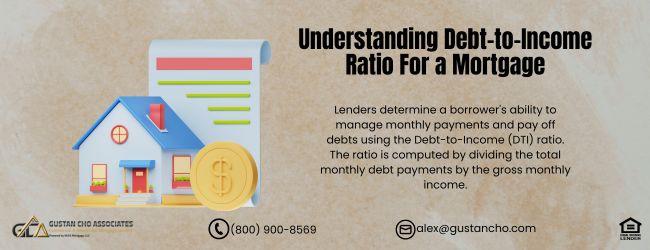Fannie Mae versus HUD Non-Occupant Co-Borrower Guidelines

This guide covers Fannie Mae versus HUD non-occupant co-borrower guidelines. There are differences in conventional versus FHA non-occupant co-borrower guidelines. Adding non-occupant co-borrowers are allowed on FHA and Conventional loans. Many borrowers often are short in qualifying for a home mortgage due to exceeding the maximum debt-to-income ratio caps.
There are countless reasons why borrowers exceed debt-to-income ratio caps. It can be due to not making enough money or having a non-qualified income. Remember that cash wages cannot be used as qualified income.
Part-time jobs, bonus income, or overtime income can only be used if it has been seasoned for two years. Adding non-occupant co-borrowers can be a great benefit for homebuyers who need additional income to meet the maximum debt to income ratio requirements on FHA and/or Conventional loans. Both FHA and Conventional loans have their benefits on their agency guidelines. Mortgage borrowers can add multiple non-occupant co-borrowers on FHA and Conventional loans. In the following paragrpahs, we will cover non-occupant borrower co-borrower guidelines.
HUD Versus Fannie Mae Non-Occupant Co-Borrower Guidelines
FHA loans are very popular among first-time homebuyers and buyers with less than perfect credit. Homebuyers can qualify for a 3.5% down payment home purchase FHA loan with a 580 credit score. Buyers with under 500 FICO and down to 500 credit scores can qualify for an FHA loan with a 10% versus 3.5% down payment on the home purchase. FHA loans are more forgiving with bad credit. It is easier to get an approve/eligible per automated underwriting system (AUS) versus conventional loans. To qualify for a 3.5% down payment home purchase FHA loan with non-occupant borrowers, the non-occupant co-borrowers need to be related to the main borrower by law, blood, or marriage.
Non-Occupant Co-Borrower Guidelines
- Eligibility: Fannie Mae allows non-occupant co-borrowers to be included on a single-family primary residence mortgage.
- Income: The income of non-occupant co-borrowers can be used to qualify for the loan.
- Down Payment: Standard down payment requirements apply based on the loan-to-value (LTV) ratio.
- Credit: Both the occupying and non-occupying co-borrowers credit scores and profiles are considered.
- Maximum LTV: Primary Residence: Up to 95% LTV for single-family homes when all borrowers qualify based on their income and assets.
HUD (FHA) Guidelines
HUD Non-Occupant Co-Borrower Guidelines
- Eligibility: HUD non-occupant co-borrower guidelines for primary residences include the following.
- Income: Non-occupant co-borrowers income can be used to qualify, but they must be family members or have a close relationship with the primary borrower.
- Down Payment: Typically, the FHA requires a minimum down payment of 3.5%, but the LTV ratio must not exceed 75% if there is no occupying co-borrower.
- Credit: Both borrowers’ credit profiles are evaluated, but FHA loans are known for having more lenient credit requirements than conventional loans.
Maximum LTV
- Primary Residence: Up to 96.5% LTV with an occupying co-borrower.
Non-Occupant Co-Borrower Guidelines Related By Law, Marriage, Blood Versus Not Related
HUD, the parent of FHA, is the federal agency in charge of setting up mortgage guidelines on FHA loans. HUD allows non-occupant borrowers both related and non-related to the main borrower. To qualify for a 3.5% down payment home purchase FHA loan with non-occupant co-borrowers, the non-occupant co-borrower needs to be related to the main borrower by blood, law, or marriage. HUD allows non-occupant co-borrowers who are NOT related to the main borrower by law, marriage, or blood. However, if the non-occupant co-borrowers are not related to the main borrowers by law, blood, marriage, HUD requires a 25% versus a 3.5% down payment on the home purchase.
Speak With Our Loan Officer for Non-Occupant Co-Borrower Guidelines
Definition of Being Related By Law, Marriage, Blood Versus Not Being Related

FHA Loans are only for owner-occupant primary home financing. You cannot finance a second home and/or investment home with an FHA loan. The following people will qualify to become non-occupant co-borrowers as co-borrowers related to the main borrower by law, blood, marriage:
- Spouse of the main borrower: The marriage rule applies
- Parents: The blood rule applies
- Children: The blood rule applies
- Siblings: The blood rule applies
- Stepchildren: The law rule applies
- Grandparents: The blood rule applies
Again, to qualify for a 3.5% down payment home purchase FHA loan with non-occupant co-borrowers, the non-occupant co-borrowers need to be related to the main borrower by blood, marriage, law. HUD allows non-occupant co-borrowers who are not related to the main borrower to become non-occupant co-borrowers. However, a 25% down payment is required.
Conventional Versus FHA Non-Occupant Co-Borrower Guidelines
Both Fannie Mae and Freddie Mac allow non-occupant co-borrowers on conventional loans. However, unlike FHA loans, non-occupant co-borrowers do not have to be related to the main borrowers by marriage, blood, or law. Friends can become non-occupant co-borrowers on conventional loans without any regard to law, marriage, and/or blood. To qualify for a home mortgage with a lender licensed in multiple states with no lender overlays, please contact us at Gustan Cho Associates at 800-900-8569 or text us for a faster response. Or email us at gcho@gustancho.com. The team at Gustan Cho Associates is available 7 days a week, evenings, weekends, and holidays. Connect With Our Loan Officer for Mortgage Loans Even In Holidays
FAQs: Fannie Mae versus HUD Non-Occupant Co-Borrower Guidelines
1. What are non-occupant co-borrowers? Non-occupant co-borrowers co-sign a mortgage loan but do not live in the financed property. Their income and credit can help the primary borrower qualify for the loan.
2. Can non-occupant co-borrowers be used for both FHA and Conventional loans? Yes, non-occupant co-borrowers can be used for both FHA and Conventional loans.
3. What are the main differences between Fannie Mae (Conventional) and HUD (FHA) guidelines for non-occupant co-borrowers? Regarding home loans, FHA (HUD) mandates that non-occupant co-borrowers must have a legal, blood, or marital relationship with the primary borrower to be eligible for the standard 3.5% down payment. Otherwise, a 25% down payment is needed. Fannie Mae (Conventional) loans do not have this requirement.
Both FHA and Conventional loans consider the credit and income of non-occupant co-borrowers. FHA’s standard down payment is 3.5%, increasing to 25% for unrelated co-borrowers. At the same time, Conventional loans base the down payment on the loan-to-value (LTV) ratio. The maximum LTV for FHA is up to 96.5% with an occupying co-borrower. For Conventional loans, it’s up to 95% for single-family homes when all borrowers qualify based on their income and assets.
4. Who qualifies as a non-occupant co-borrower under FHA guidelines? Under FHA guidelines, individuals who can be non-occupant co-borrowers include those related by law, blood, or marriage, such as a spouse, parents, children, siblings, stepchildren, and grandparents.
5. What are the specific FHA down payment requirements for non-occupant co-borrowers? For non-occupant co-borrowers associated with the FHA, the down payment requirements vary based on their relation to the primary borrower. If they are related by law, blood, or marriage, the minimum down payment required is 3.5%. However, if no such relation exists, the minimum down payment increases significantly to 25%.
6. Can friends be non-occupant co-borrowers on Conventional loans? Yes, friends can be non-occupant co-borrowers on Conventional loans without any requirement to be related by law, blood, or marriage.
7. What types of income can non-occupant co-borrowers use to qualify? Non-occupant co-borrowers can use income that is both documented and verified to qualify. This is known as qualified income. However, there are restrictions on what can be considered. Non-qualified income includes cash wages, which cannot be used. Additionally, any income from part-time work, bonuses, or overtime must have been consistently earned for at least two years before it can be counted.
8. Are there any restrictions on the type of property that can be financed with an FHA loan? FHA loans are exclusively for primary residences occupied by the owner. They are not intended to finance second homes or investment properties.
9. How can I get more information or apply for a mortgage with non-occupant co-borrowers? For more information or to apply for a mortgage with non-occupant co-borrowers, contact Gustan Cho Associates. We can be reached at 800-900-8569 or by email at gcho@gustancho.com. Their team is available seven days a week, including evenings, weekends, and holidays.






Responses